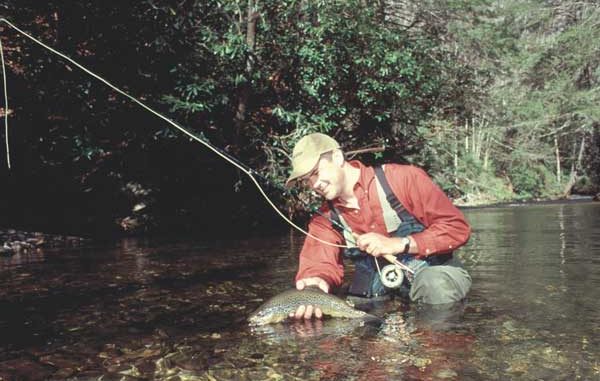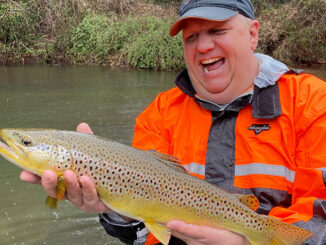
Ask any dedicated North Carolina fly fisherman about the Davidson River, and you’re likely to get a strongly opinionated reply.
That response might include that the Davidson is the premier and best-known trout stream in the state. It consistently ranks among the top trout water in the region and also was listed in Trout Unlimited’s book, “America’s 100 Best Trout Streams.”
On the other hand, you might hear about the Davidson’s infamously difficult-to-catch trout or equally maddening weekend crowds. It’s all a part of the Davidson River experience.
The fish are big but educated, selective and wary. The spring insect hatches can be prolific and luxuriant, but so are the accompanying “Gore-Tex hatches.”
Those who love the river learn to accept the pluses and minuses, but the sum cleanly lands in positive territory.
There is little disagreement among trout anglers that the Davidson presents one of the stiffest challenges for N.C. fly-rod enthusiasts.
According to Kevin Howell, owner of Davidson River Outfitters in Pisgah Forest, the Davidson’s trout are some of the most difficult fish to catch in the world.
“Once an angler can successfully catch fish on a repeated basis out of the Davidson, they are capable of catching fish out of any river in the world,” said Howell.
Yes, it can be that tough.
During its journey from the N.C. high country to the confluence with the French Broad River near Brevard, the Davidson River reshapes itself into different personalities and moods.
The river upstream of the Pisgah State Fish Hatchery has all the characteristics of any typical mountain trout stream found throughout the Southern Appalachians. As it carves its way through rugged mountain terrain, it hosts a healthy population of wild brown and rainbow trout in a pristine setting.
“The Upper Davidson from the Pisgah Hatchery upriver to its headwaters is classic mountain pocket water,” Howell said. “The fish average 10 to 13 inches with a few larger ones mixed for good measure.”
The water is relatively infertile and fish have to be opportunistic feeders to survive. Any well-presented fly has a good chance of hooking up with a colorful, wild trout.
Anglers are much more likely to have plenty of river to fish in this stretch as the river takes on the look and feel of real wilderness.
In contrast, the area near the hatchery is the most-crowded and challenging stretch of the entire river. The fish are bigger, more educated from seeing fishermen on a regular basis and not so easily fooled. If an angler wants to stake out a piece of river here to fish, the best bet is a visit during a weekday when there are far fewer people thrashing the water.
“This section of river, from the diversion weir to about a half-mile below the hatchery, receives 90 percent of the fishing pressure the Davidson River receives,” Howell said. “It can get very crowded at times.”
A significant amount of water is diverted from the river through the hatchery, so anglers often see many large trout cruising confidently in the shallow, reduced river flow. From the infamous “Desperation Pool” behind the hatchery, scores of rainbow and brown trout in excess of 18 inches can be spied in plain view from the river’s bank. Not only does this contribute to a state of neurosis with well-outfitted pursuers, it gives a decided edge to the quarry.
“The nutrients the hatchery pumps back into the river, such as excess trout food, chronimid worms and general waste products, have caused the fish in this section to reach much larger sizes,” Howell said. “The average fish in this section runs 16 to 18 inches, but there are a lot of trout over 20 inches.”
This fishing is technical at this stretch of the Davidson, and most beginner or novice fly anglers leave the river frustrated by failed attempts at hooking these fish.
“What is required to catch these trout is a technical, completely drag-free drift with a fly that the fish don’t get hammered with every day,” Howell said.
“Although anglers occasionally will catch some fish with midges or will wait for a flush from the hatchery before fishing eggs or pellet patterns, the anglers who are highly successful in this section have learned to think outside of the box.
“For example, while most anglers prefer to go with smaller flies — sizes 20 to 30 — I like to go with much larger flies, size 8 or bigger, because no one else is fishing anything that big. Often enough, it’s made all the difference.”
Go to our archives to read the rest of this story, which first appeared in the April 2008 issue of North Carolina Sportsman magazine. Subscribe to have each information-packed issue delivered right to your door.




Be the first to comment